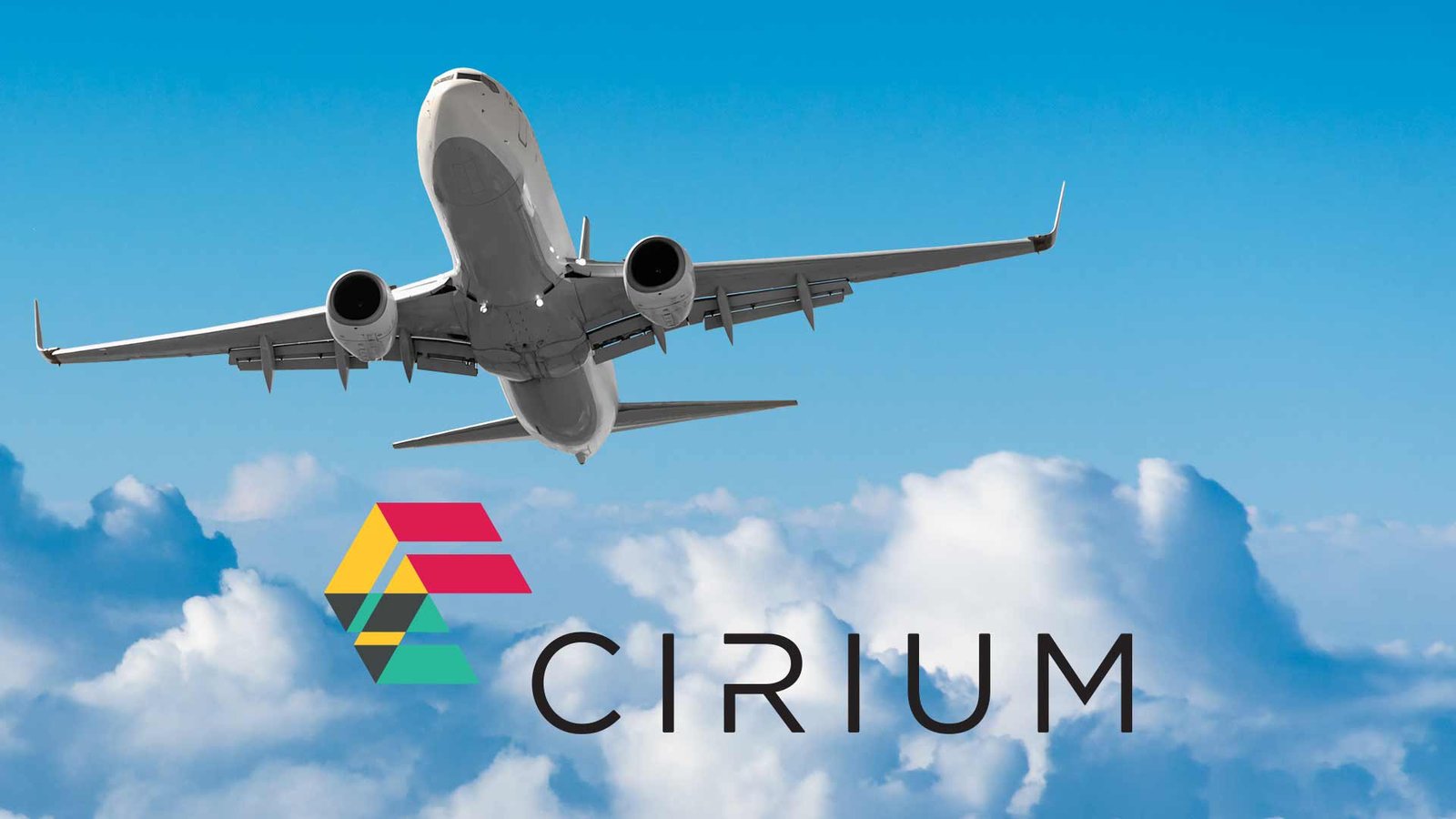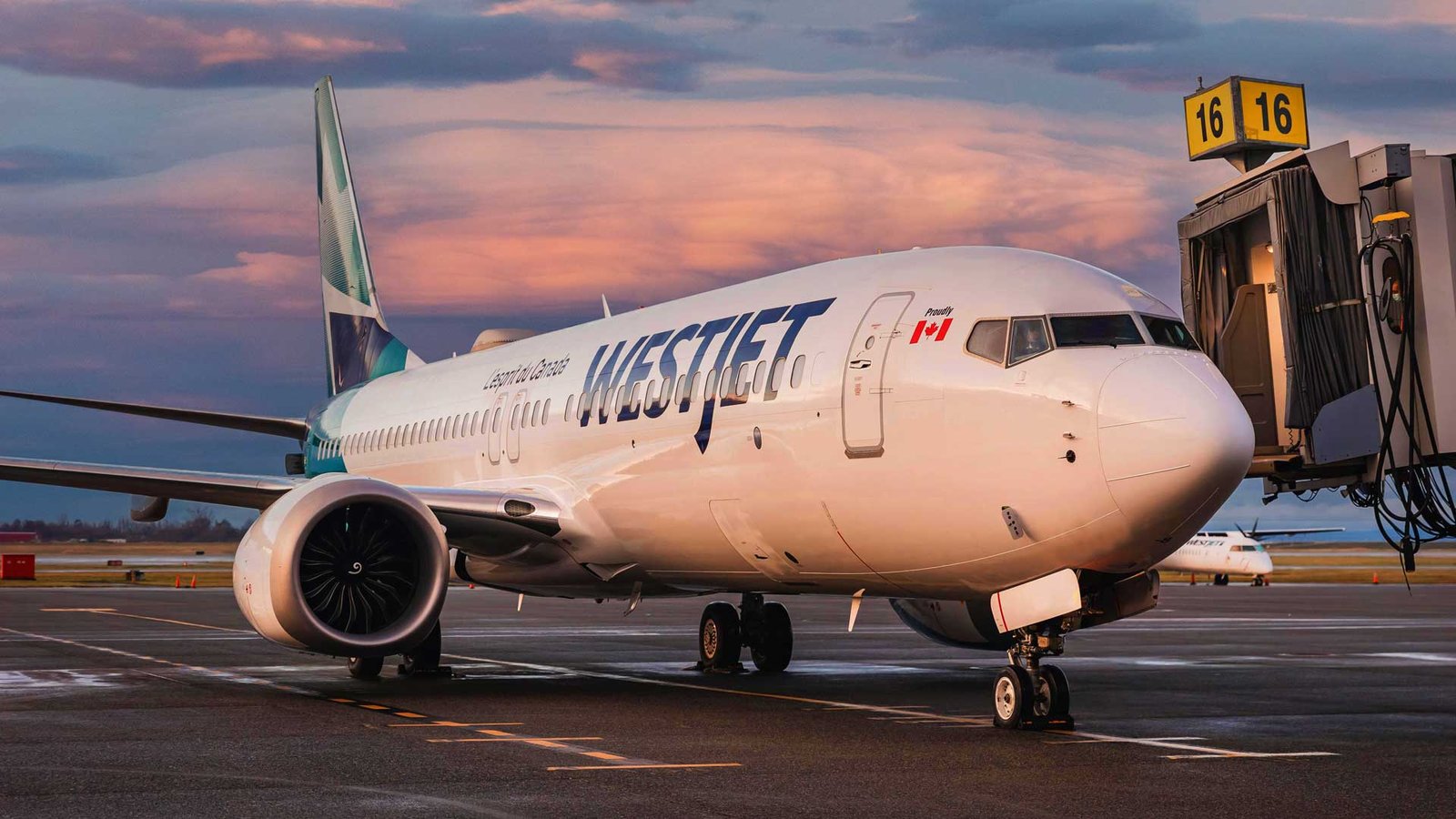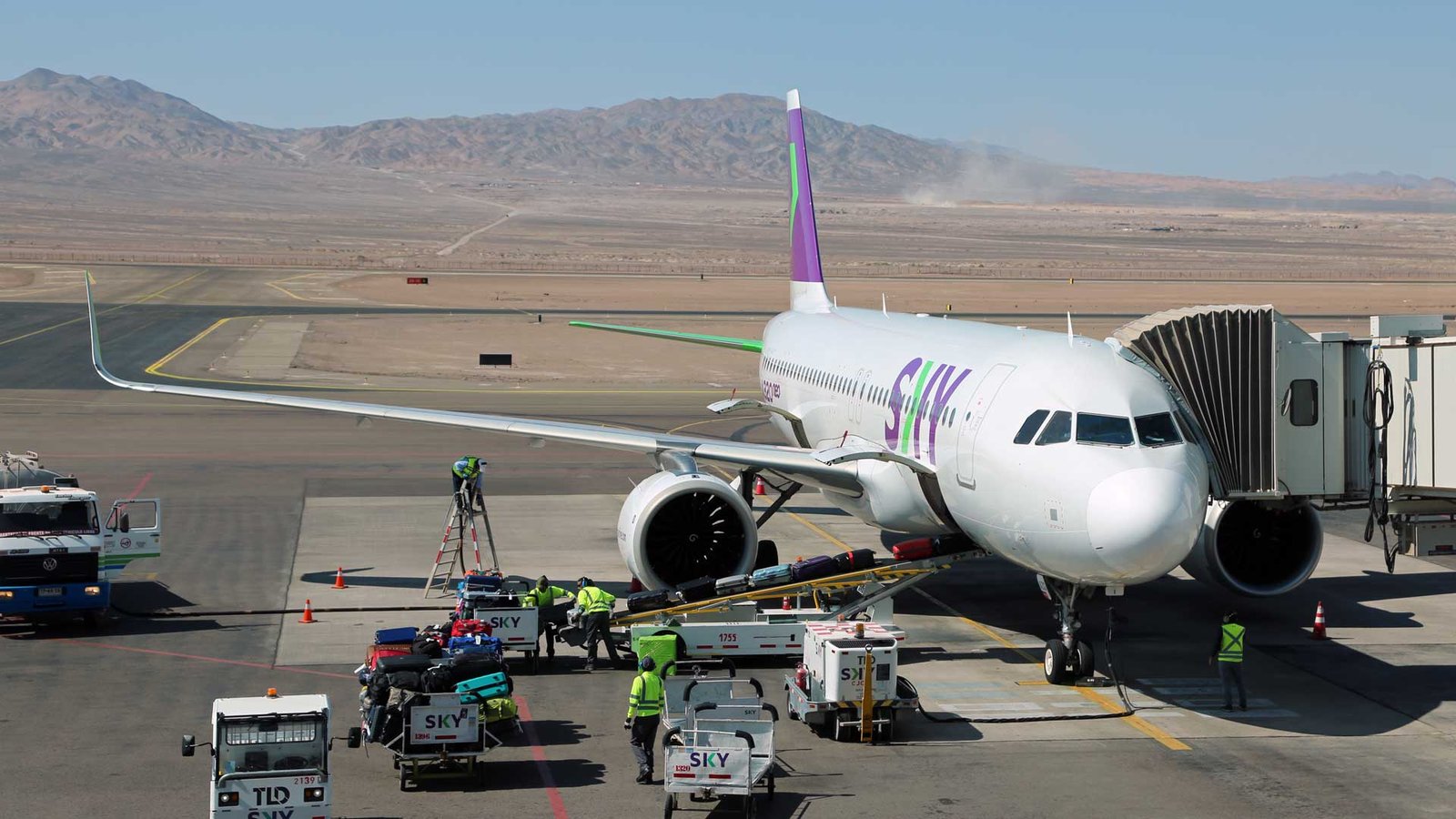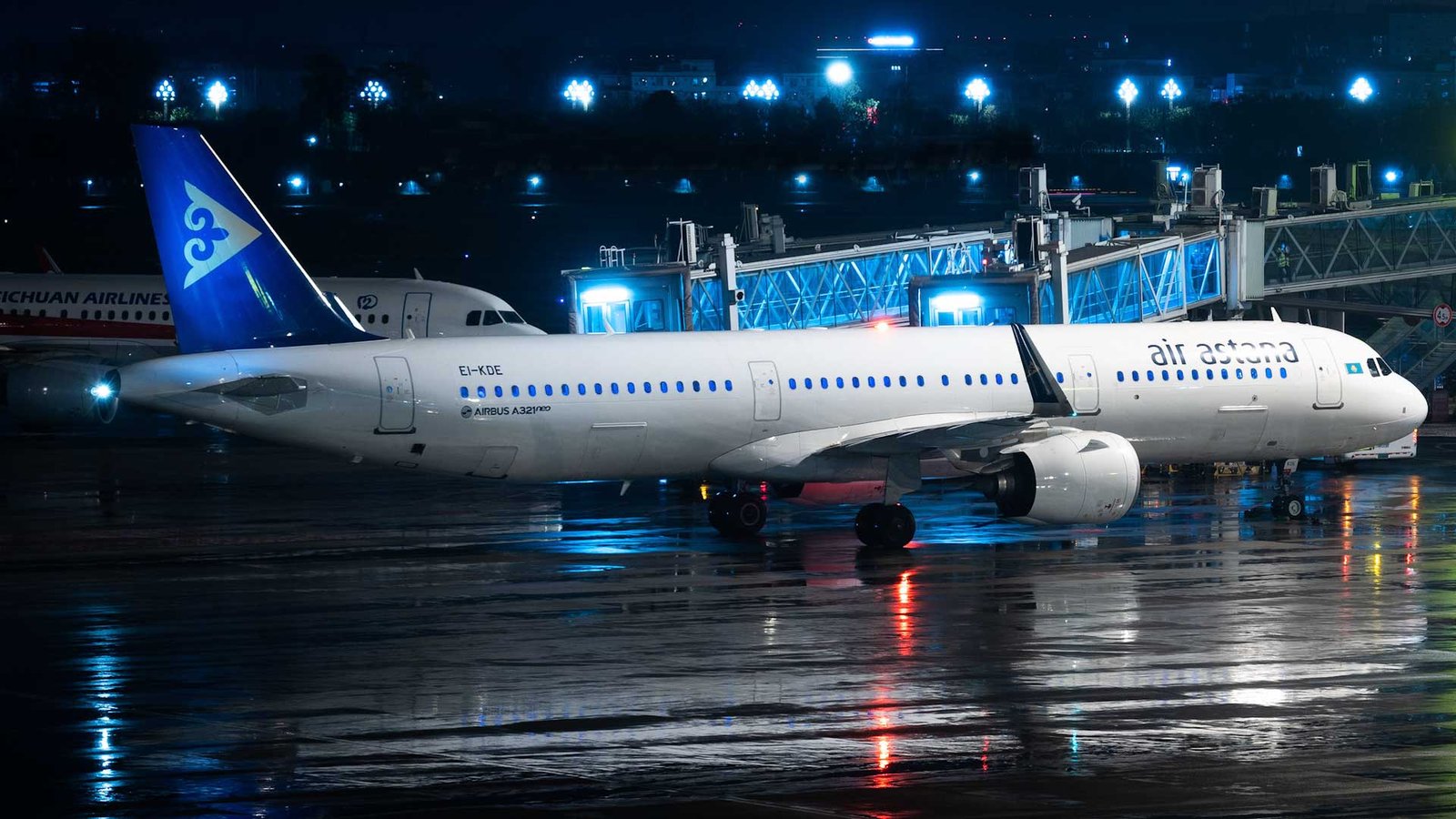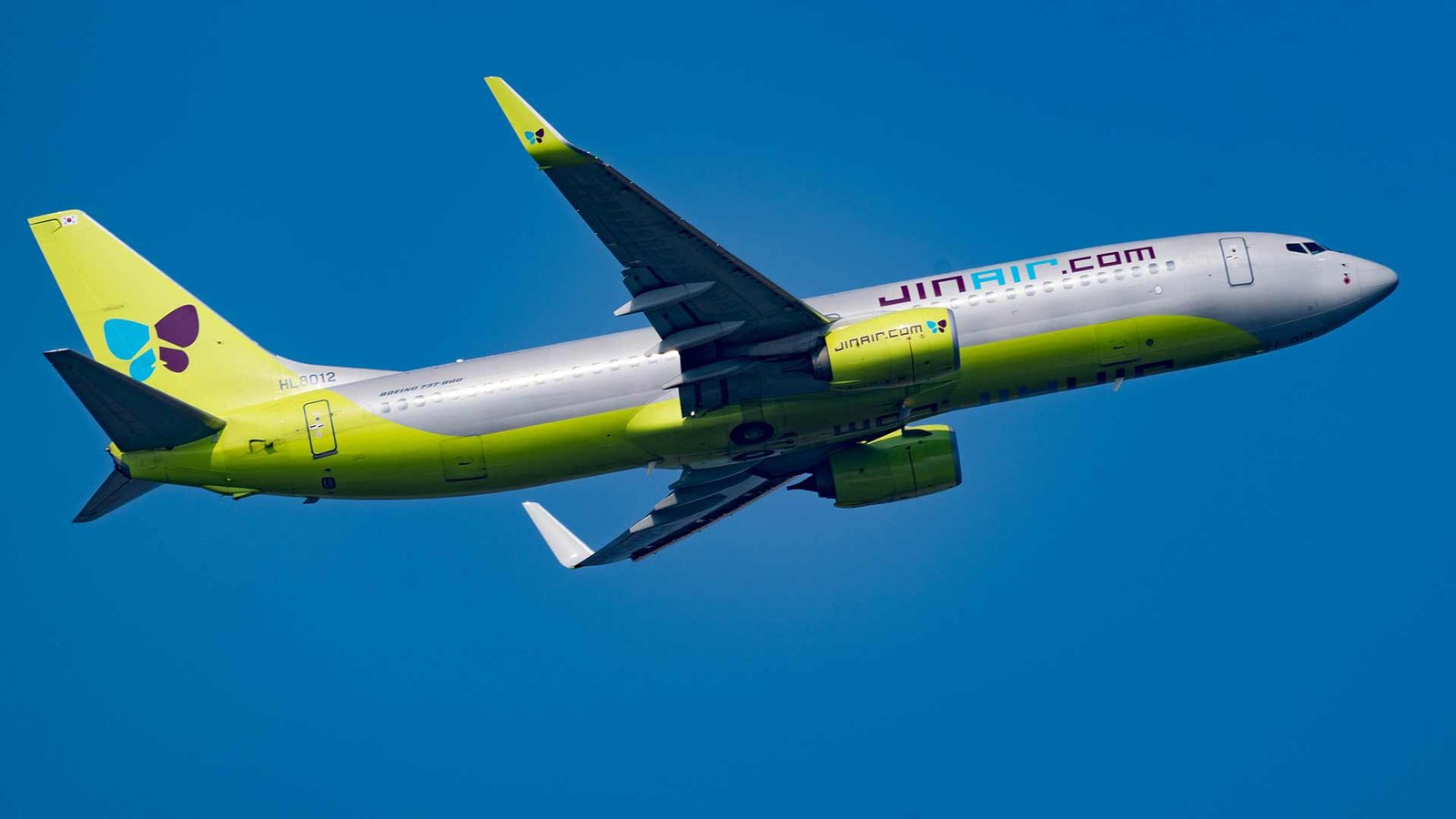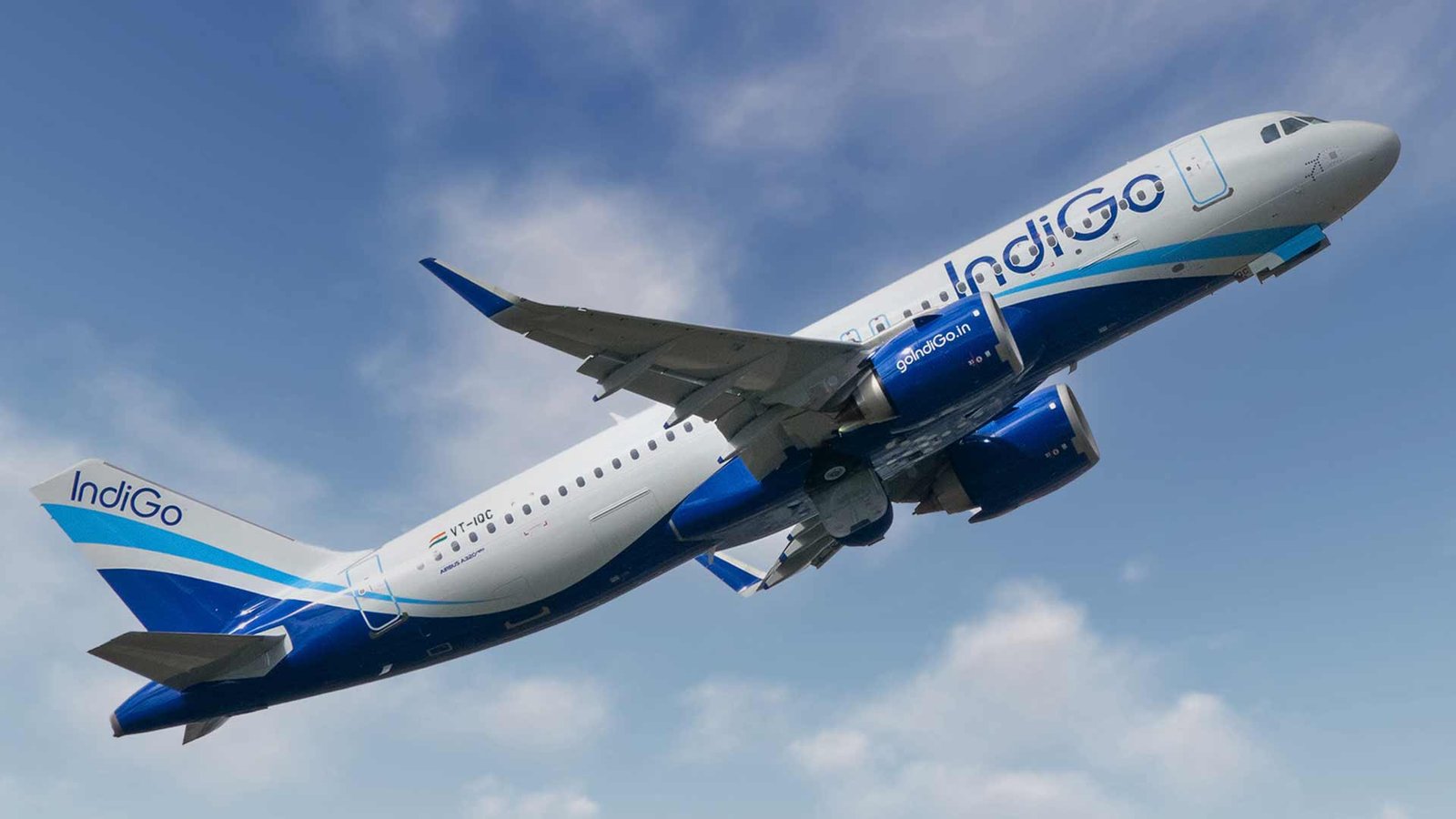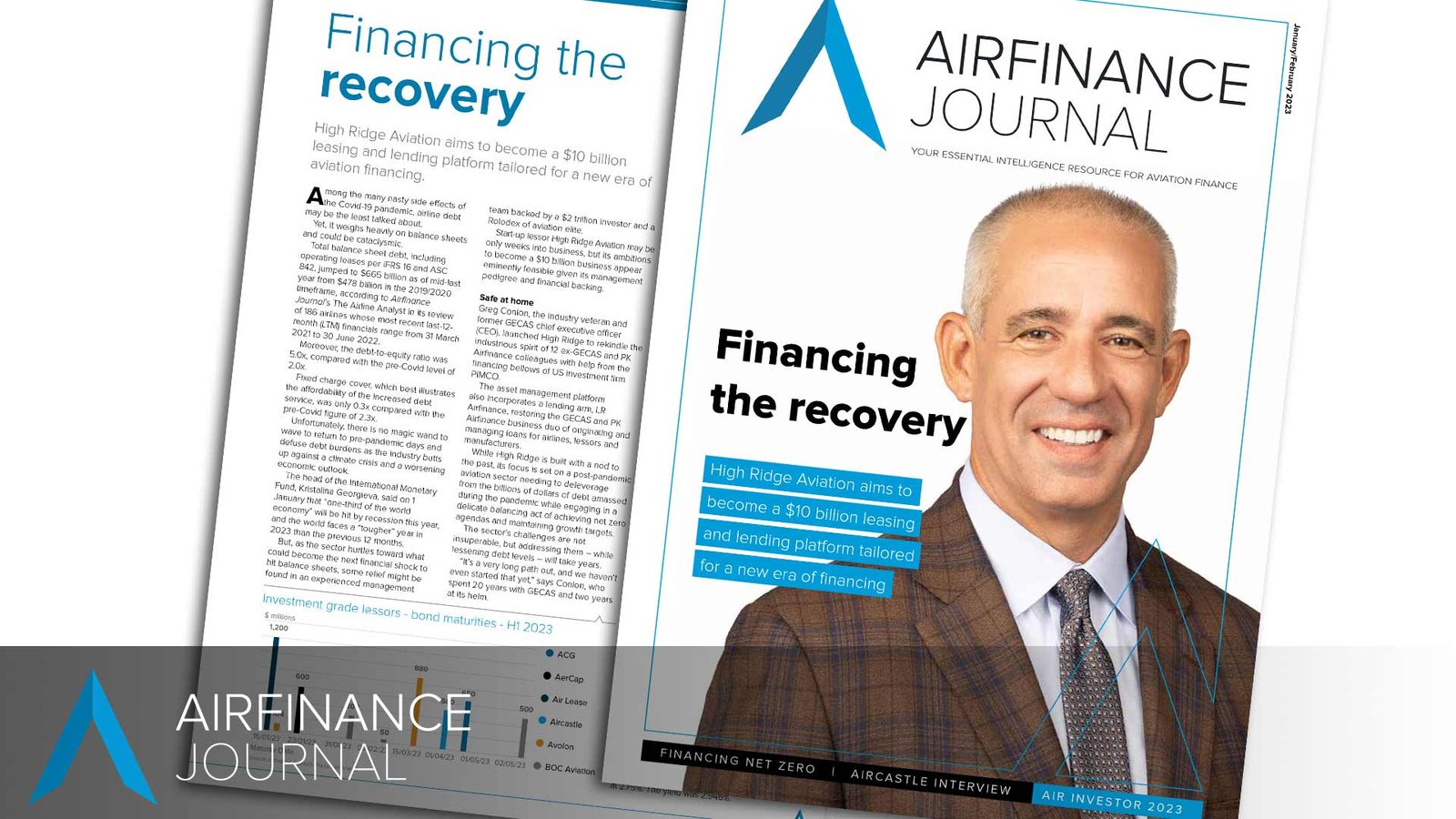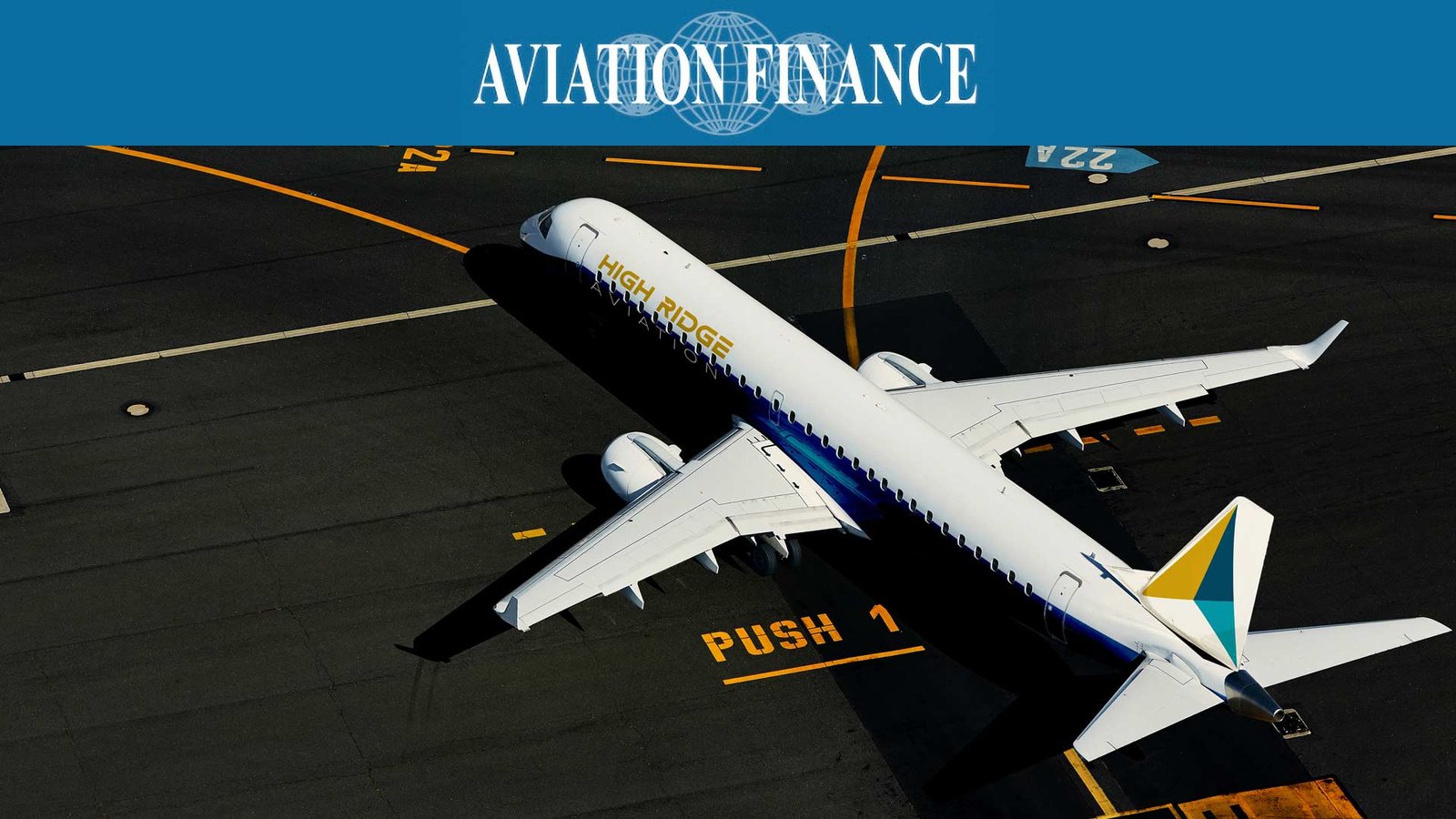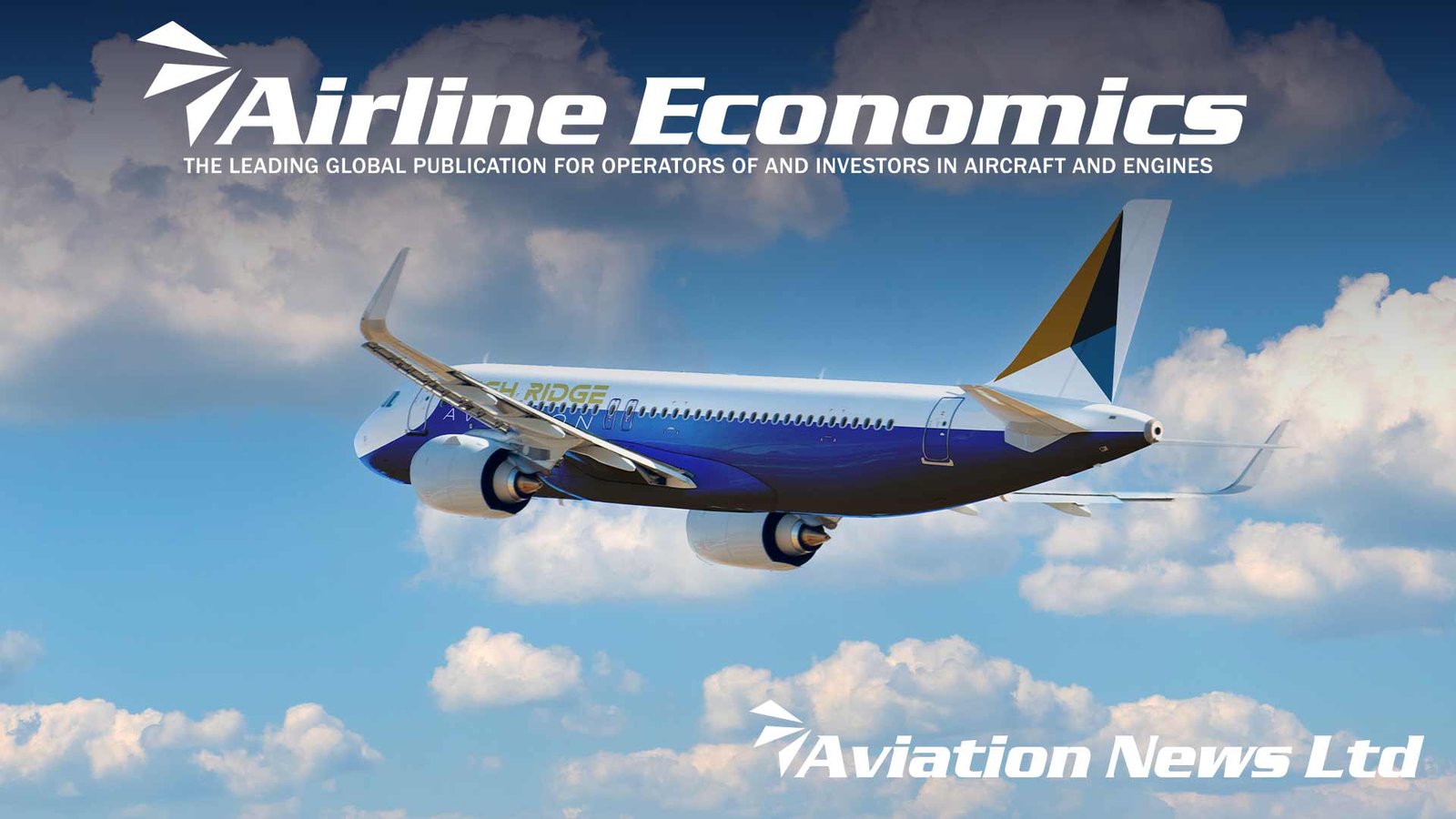By Oliver Clark | 03 Nov 2022
It is easy to detect a hint of nostalgia in the creation of new leasing and lending platform High Ridge Aviation.
The management team behind the venture is for the most part drawn from GECAS, not least chief executive Greg Conlon, who spent more than 20 years at the US lessor, including more than two years at its helm.
High Ridge plans to build a fully-fledged leasing portfolio while its subsidiary LR AirFinance will originate and manage secured aviation loans to support the needs of airlines, lessors and manufacturers.
The structure of the company is not dissimilar to that of GECAS, which at the peak of its powers was able to combine a leading leasing business with a lending capability through its PK AirFinance arm.
The dissolution of that business, with PK AirFinance’s sale to Apollo and Athene in 2019 and AerCap’s acquisition of GECAS in 2021, arguably had more to do with the strategic priorities of then- parent GE than with any innate failures of the business model, so it makes sense that Conlon is in some ways seeking to replicate a structure he knows well.
In an interview with Cirium on 2 November, Conlon said the secret to success for High Ridge would be drawing on previous experience to build a platform that carefully separated the leasing and lending businesses.
One of the differentiators of this platform is you have to be very thoughtful on how you set up a lending platform if you want to have a traditional lender customer base which includes airlines, institutional and financial investors, and lessors,” he says.
“You have got to do it right, you have to have information walls, you have to make sure they are separate companies, you have to make sure data is not shared across platforms. This is something we know very well: we did this for over 20 years at GECAS,” Conlon adds.
He recalls that as an employee at PK AirFinance when GE Capital acquired it, he saw at first-hand how the platform was integrated so that institutional investors – the lessors’ clients for the debt platform – were “kept safe”.
Conlon says that while there is no set target for how the two arms develop, the first deals High Ridge does are likely to be loans as these are quicker to structure than leasing deals, which typically involve delivery, novation, and more asset management.
But over time, he expects that the platform will be a multibillion-dollar business that will be a “bit heavier” on the leasing side.
MANAGED MONEY MODEL
High Ridge’s financial backer is US investment giant PIMCO. Conlon has previous experience of working with that company when it partnered with GECAS in 2020 to form joint venture Gilead Aviation, which would invest up to $3 billion in more fuel-efficient new-generation aircraft.
We know them well, we have worked with them before,” Conlon says, adding: “The good thing about being with someone like that is that capital is not a limiting factor on the size that High Ridge will become.”
He says an advantage of working with PIMCO is that it can tap multiple funds, including ones geared toward senior secured debt and those types of risk profile. It also has the ability to raise capital and fund large transactions.
Picking the right investment partner was important to align the return expectations of backers with the business model Conlon is putting in place. As he says, High Ridge will bear many of the hallmarks of a traditional operating lessor and will pursue a typical leasing deal rather than a high- yield or distressed play.
You cannot look at typical high-yield debt as a funding platform and then try to do traditional deals. On the debt side, it’s very important to have the right capital,” he says.
Conlon’s decision to partner with a large US investment fund is motivated by his belief that the aircraft leasing and secured lending space are moving towards a “managed money model”.
It’s just really challenging to build something of scale, on a single balance sheet, and be able to fund it efficiently… The very large companies that own significant aircraft leasing companies were uniquely positioned to do so and it’s very difficult to recreate that on a standalone business,” he says.
“What we want to focus on is: we have got the management team, and all we do is source and manage assets, and you team up with someone with pockets of capital that is efficient at owning us. I just think it’s where the market is going. It’s been going that way for a while.”
THE OPPORTUNITY
Conlon says that with any dislocation in a market, there is an opportunity for someone to come in with the right capital structure and reap rewards. He sees the current macroeconomic conditions facing the airline and leasing industries as creating such a situation.
One of these is a “tremendous” amount of liquidity that came into the space in the wake of the pandemic “just to keep the airlines alive”. Conlon estimates that more than $250 billion of debt was deployed over the past two years or so, to fund the industry.
The airlines need to grow in order to become profitable in order to pay down that debt. The only way they grow is by getting more aircraft,” he says.
He sees wider headwinds impacting traditional bank debt providers.
We have seen commercial banks that are starting to back out of this space. Some of them have to apply more regulatory capital against aviation exposure. That is putting pressure on returns,” Conlon notes.
“So, a traditional financing source is not really there anymore, and LR AirFinance is well positioned to provide that.”
He observes that another advantage in starting out at this stage in the cycle is that, as a new platform, High Ridge has a clean balance sheet without the “exposure issues” that some competitors have to contend with following the Covid crisis.
This will allow the platform to be nimble to secure sale-and-leaseback deals with airlines, and also buy and trade assets with other lessors. Conlon says High Ridge will be open to looking at whole portfolios and could partake in the M&A activity that has characterised the leasing sector in recent years.
He is less sanguine about building up an orderbook with OEMs. While his team is well experienced in placing direct orders, having bought “tens of billions” worth of aircraft at GECAS, he notes that an orderbook needs to have the right mix of assets, a “reasoned” view on demand and right-timed delivery slots.
Right now, it seems a little challenging to get all three of those things to point in the same direction, so I think initially an orderbook would not be something that would be our day-one strategy,” he says.
METAL BUSINESS
Conlon says that, fundamentally, High Ridge is a metal business: “Our DNA is we underwrite the metal first, credit, and then structure.”
He believes that a clear understanding of the assets is the bedrock of any successful leasing platform.
If you get the buy side wrong and you buy the wrong asset, or you spend too much for the wrong asset, or you spend too much for a decent asset, all the credit in the world isn’t going to save you. But if you buy the right asset and you underwrite the metal well, you can withstand credit,” he opines.
Generally speaking, Conlon says, a lessor or lender needs to be more credit-focused for assets that are less liquid – those that typically take longer to transition, with longer lead times.
One such market is the widebody space, a sector that suffered a particularly sharp downturn in demand amid the pandemic, and a knock-on decline in values.
Conlon says it is “no secret” that widebodies are more volatile assets than narrowbodies, and they have to be underwritten accordingly.
We have got a lot of experience in widebodies: we’ve owned them, we’ve transitioned them, we bought them from the OEMs on speculative orders. You have got to be more thoughtful on credit than narrowbodies and redeployment scenarios,” he warns.
His team has a background in the cargo business from the GECAS days, but Conlon says the new business is not focused on entering the conversion space. Securing conversion slots will not be the first order of business.
LEASE RATES
For several years, lease-rate factors have been depressed, primarily as a result of the impact of the pandemic and the low cost of capital. As the industry continues to recover from the pandemic and interest rates rise, the era of cheap leases will come to an end, Conlon predicts.
[Lease rates] have to [rise] because you can’t have an inflationary environment and interest rates that on a spread basis have doubled. To continue with low lease factors that are going down represents a financial equation that doesn’t square,” he suggests.
“We have seen this before: usually the interest rates move first, you have inflationary pressure second, and lease rates follow. If those first two components remain at elevated levels – and I think all economic indicators would at least lead one to tend that way – the lease rate has to follow.”
HEADWINDS
Distress in the sector might make now a good time to establish a new leasing and lending business, but there are also headwinds. One is the dislocation of asset-backed securities, which in Conlon’s words are simply “not issuing” at present following the rise in interest rates and the impact of the Russian/Ukraine conflict.
He says High Ridge would look at both ABS and collateralised loan obligation (CLO) takeouts to refinance debt, but does not give a prediction of when this market will reopen.
Another area of concern within the leasing sector this year has been a greater focus on jurisdictional risk following the situation with Russia.
Lessors have proven resilient to the write downs forced by the conflict, but some in the leasing community worry about the potential for a similar situation with China in relation to a new crisis involving Taiwan.
Everybody in the industry is watching that,” says Conlon. “From my chair, it’s probably too early to make a call on how that plays out. Hopefully we see calmer waters going ahead in that area.”

